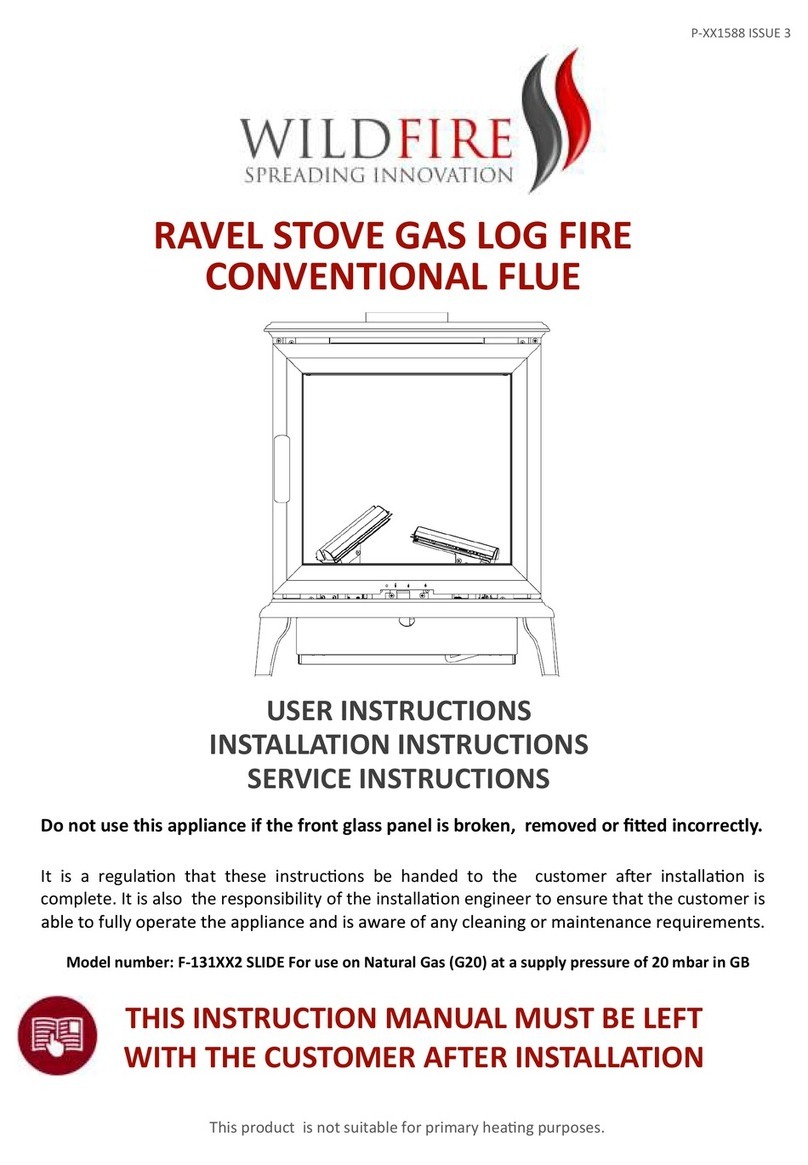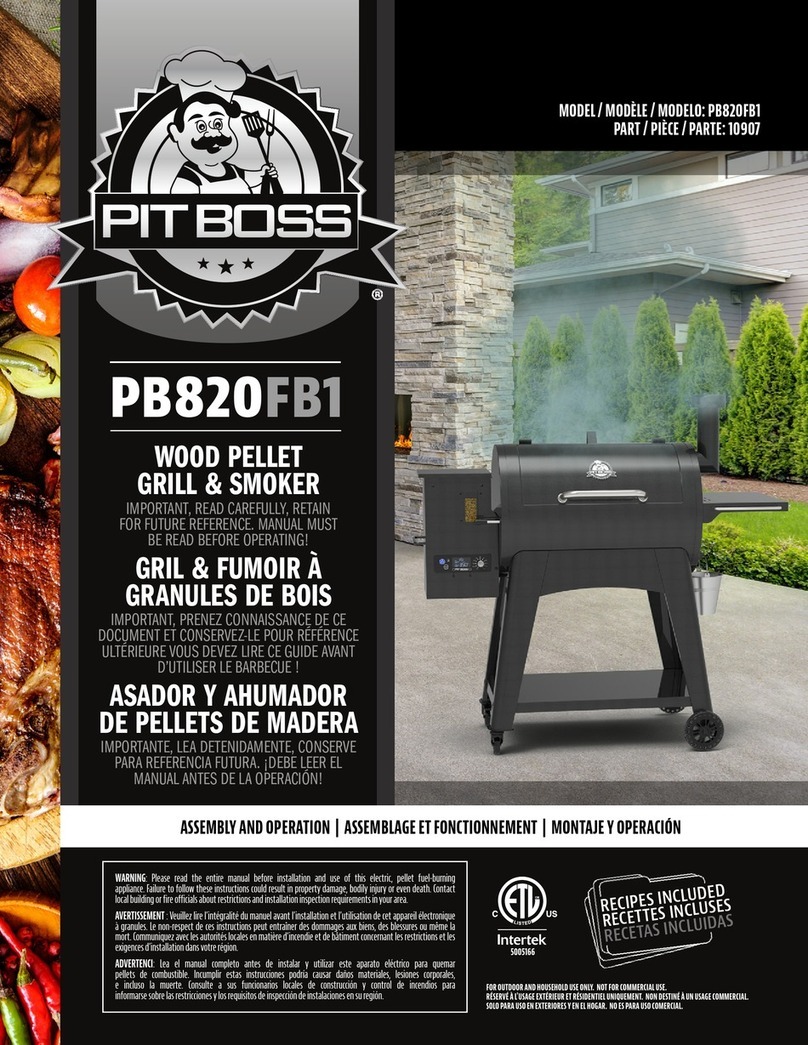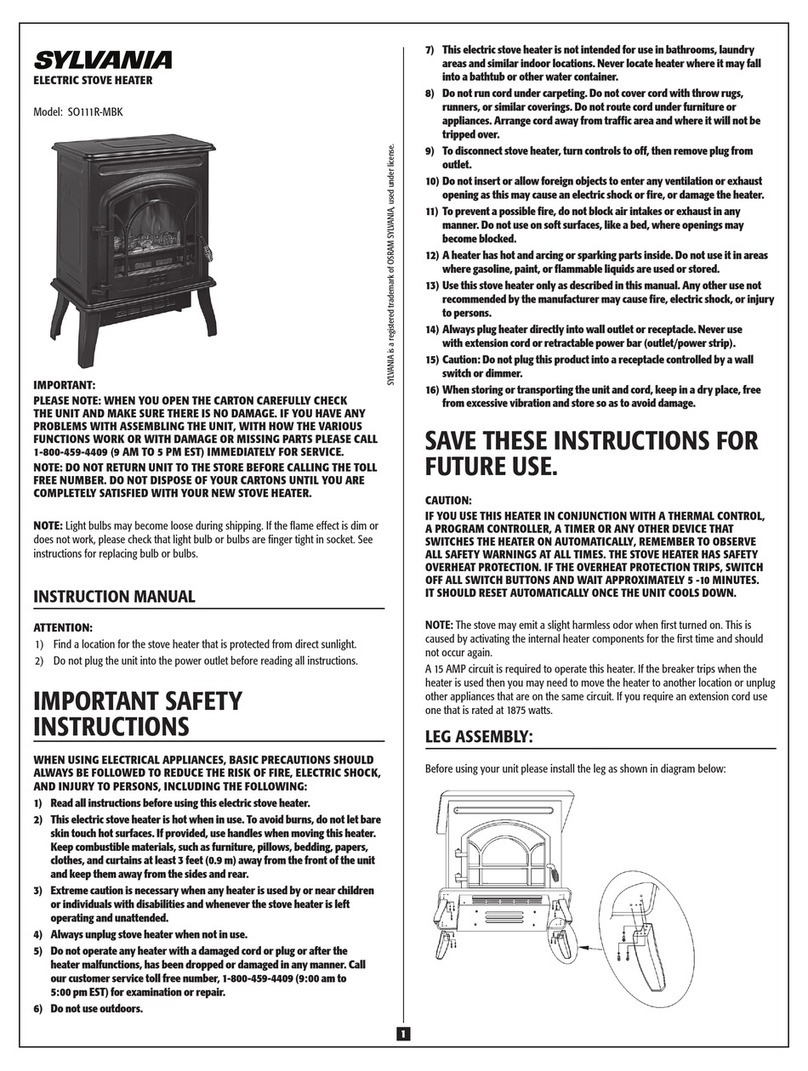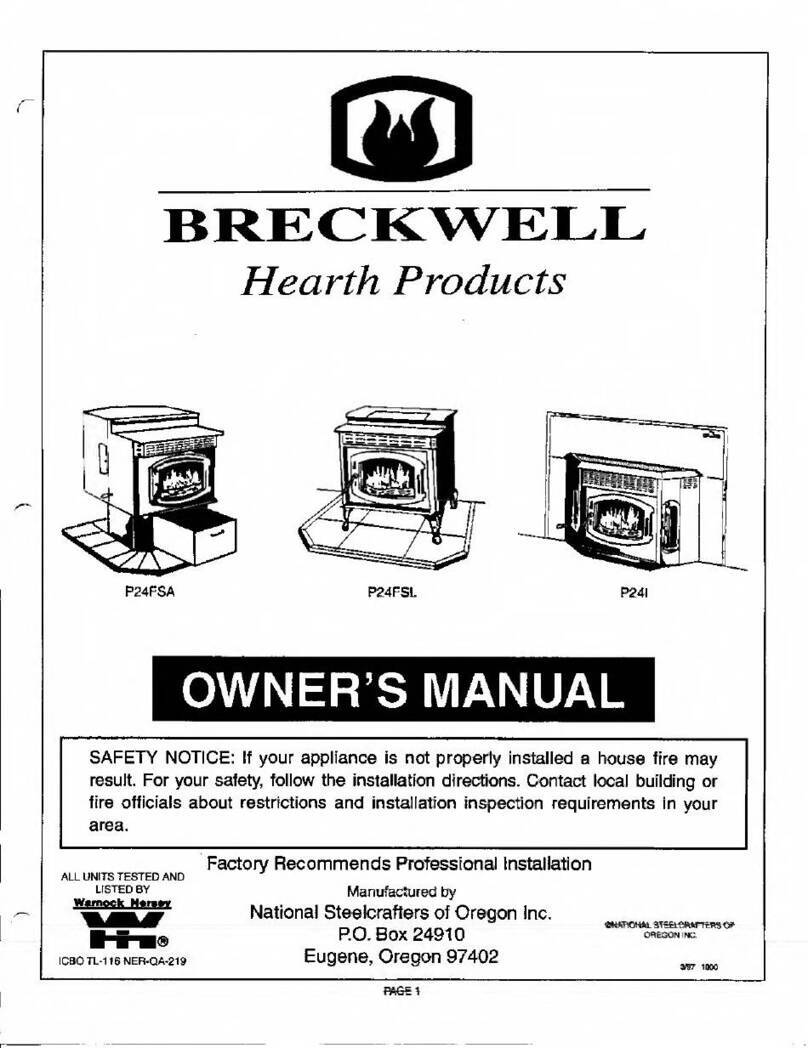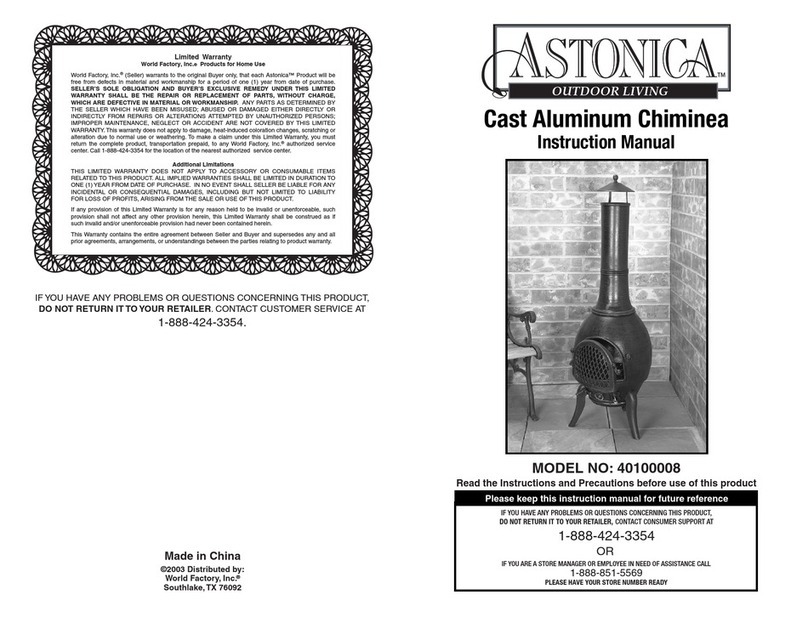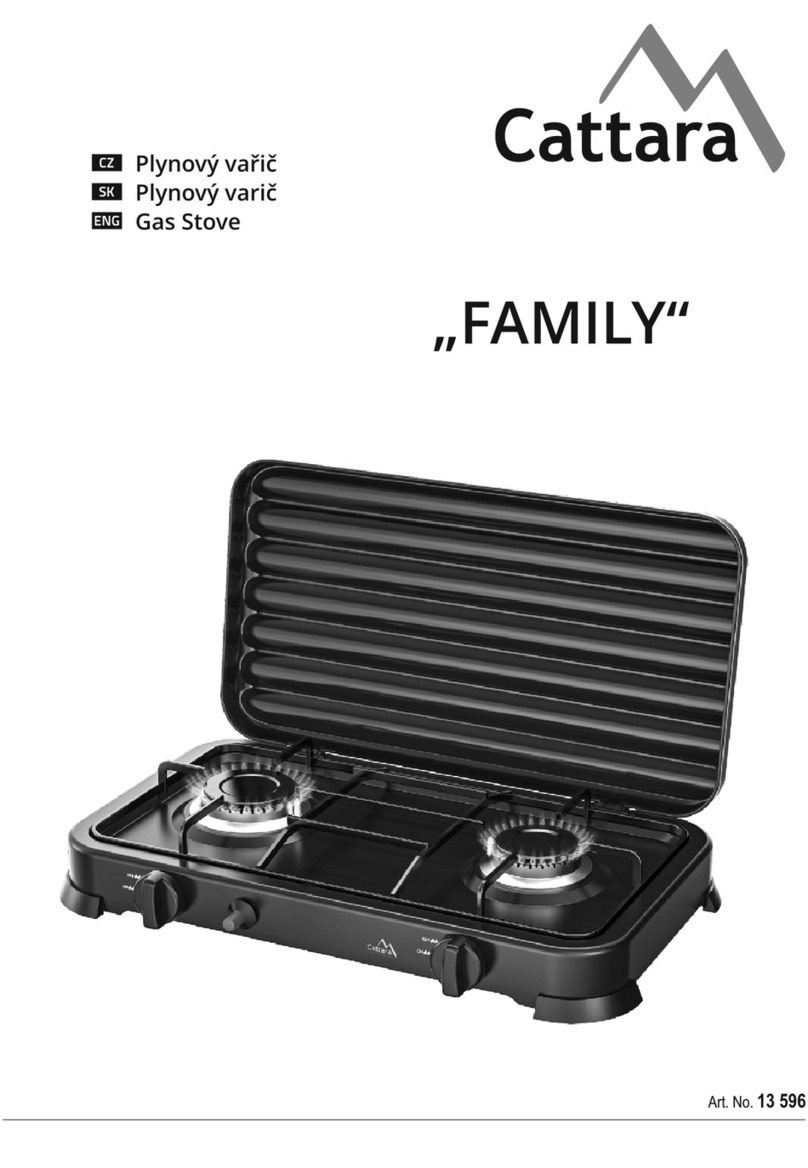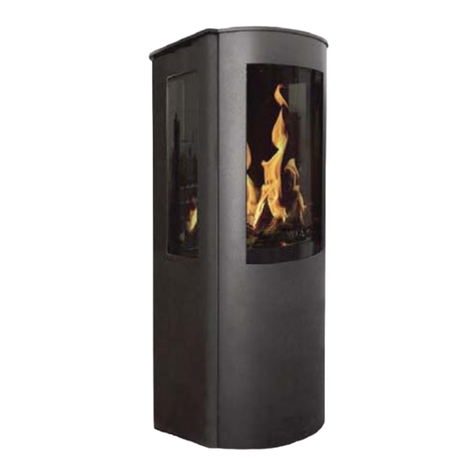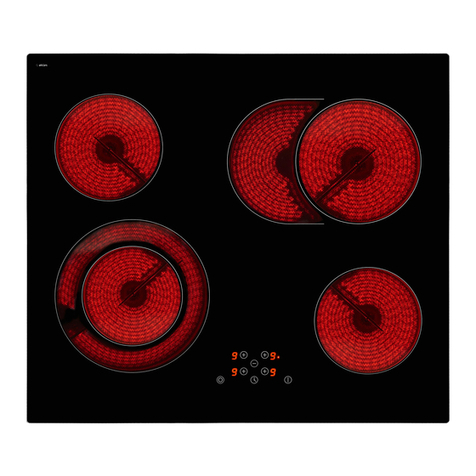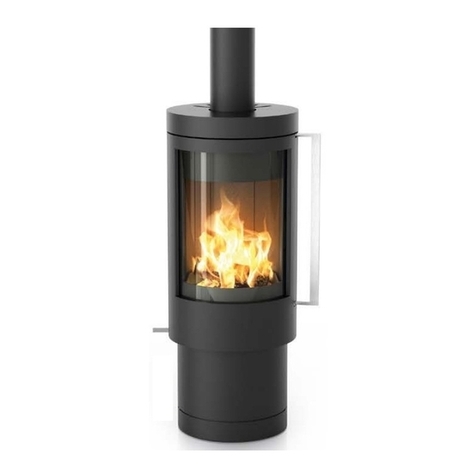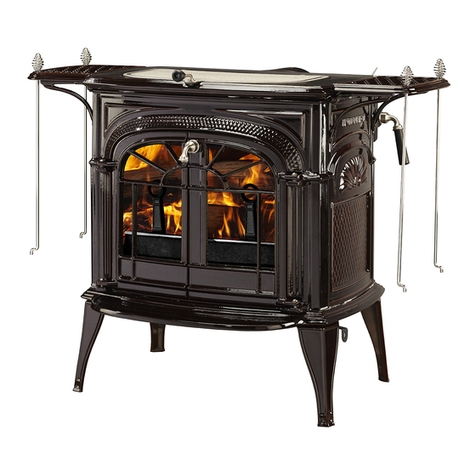
Comfortflame.US.com
900577-00_NC 5
AIR FOR COMBUSTION AND VENTILATION
WARNING: This appliance shall not be installed in
a room or space unless the required volume of indoor
combustion air is provided by the method described
in the National Fuel Gas Code, ANSI Z223.1/NFPA 54,
the International Fuel Gas Code, or applicable local
codes. Read thefollowing instructions to ensure proper
fresh air for this and other fuel-burning appliances in
your home.
Today’shomesarebuiltmoreenergyefcientthanever.Newmateri-
als, increased insulation and new construction methods help reduce
heat loss in homes. Homeowners apply weather strip and caulk
around windows and doors to keep the cold air out and the warm
air in. During heating months, homeowners want their homes as
airtight as possible.
While it is good to make your home energy efficient, your home needs
to breathe. Fresh air must enter your home. All fuel-burning appliances
need fresh air for proper combustion and ventilation.
Exhaust fans, some fireplaces, clothes dryers and some fuel-burning
appliances draw air from the house to operate. You must provide ad-
equate fresh air for these appliances. That will ensure proper venting
of vented fuel-burning appliances.
PROVIDING ADEQUATE VENTILATION
The following are excerpts from National Fuel Gas Code, ANSI Z223.1/
NFPA 54, Air for Combustion and Ventilation.
All spaces in homes fall into one of the three following ventilation
classifications:
1. Unusually Tight Construction
2. Unconfined Space
3. Confined Space
The information on pages 5 through 6 will help you classify your
space and provide adequate ventilation.
Unusually Tight Construction
The air that leaks around doors and windows may provide enough
fresh air for combustion and ventilation. However, in buildings of
unusually tight construction, you must provide additional fresh air.
Unusually tight construction is defined as construction where:
a. walls and ceilings exposed to the outside atmosphere have a
continuous water vapor retarder with a rating of one perm (6 x
10-11 kg per pa-sec-m2) or less with openings gasketed or sealed
and
b. weather stripping has been added on openable windows and
doors and
c. caulking or sealants are applied to areas such as joints around
window and door frames, between sole plates and floors, be-
tween wall-ceiling joints, between wall panels, at penetrations
for plumbing, electrical and gas lines and at other openings.
If your home meets all of these three criteria, you must provide ad-
ditional fresh air. See Ventilation Air From Outdoors, page 6.
If your home does not meet all of the three criteria above, proceed
to Determining Fresh-Air Flow For Fireplace Location.
Confined and Unconfined Space
The National Fuel Gas Code, ANSI Z223.1/NFPA54 allows two methods
for determining whether the space in which the heater is being in-
stalled is confined or unconfined space. The standard method defines
a confined space as a space whose volume is less than 50 cubic feet
per 1,000 Btu/hr (4.8 m3per kw) of the aggregate input rating of all
appliances installed in that space and an unconfined space as a space
whose volume is not less than 50 cubic feet per 1,000 Btu/hr (4.8
m3per kw) of the aggregate input rating of all appliances installed in
that space. Rooms communicating directly with the space in which
the appliances are installed*, through openings not furnished with
doors, are considered a part of the unconfined space.
Where the air infiltration rate of a structure is known, the Known Air
Infiltration Rate Method may be used. Follow The National Fuel Gas
Code, ANSI Z223.1/NFPA 54 to use this method to determine if the
space is confined or unconfined.
* Adjoining rooms are communicating only if there are doorless
passageways or ventilation grills between them.
DETERMINING FRESH-AIR FLOW FOR APPLIANCE LOCATION
Determining if You Have a Confined or Unconfined Space Using
the Standard Method
Use this work sheet to determine if you have a confined or uncon-
fined space.
Space: Includes the room in which you will install appliance plus
any adjoining rooms with doorless passageways or ventilation grills
between the rooms.
1. Determine the volume of the space (length x width x height).
Length x Width x Height =__________cu. ft. (volume of space)
Example: Space size 20 ft. (length) x 16 ft. (width) x 8 ft. (ceiling
height) = 2560 cu. ft. (volume of space)
If additional ventilation to adjoining room is supplied with grills
or openings, add the volume of these rooms to the total volume
of the space.
2. Multiply the space volume by 20 to determine the maximum Btu/
Hr the space can support.
_______ (volume of space) x 20 = (Maximum Btu/Hr the space
can support)
Example: 2560 cu. ft. (volume of space) x 20 = 51,200 (maximum
Btu/Hr the space can support)
3. Add the Btu/Hr of all fuel burning appliances in the space.
Vent-free appliance Btu/Hr
Gas water appliance* Btu/Hr
Gas furnace Btu/Hr
Vented gas appliance Btu/Hr
Gas appliance logs Btu/Hr
Other gas appliances* + Btu/Hr
Total = Btu/Hr
* Do not include direct-vent gas appliances. Direct-vent draws
combustion air from the outdoors and vents to the outdoors.
Example:
Gas water appliance 40,000 Btu/Hr
Vent-free fireplace + 30,000 Btu/Hr
Total = 70,000 Btu/Hr

